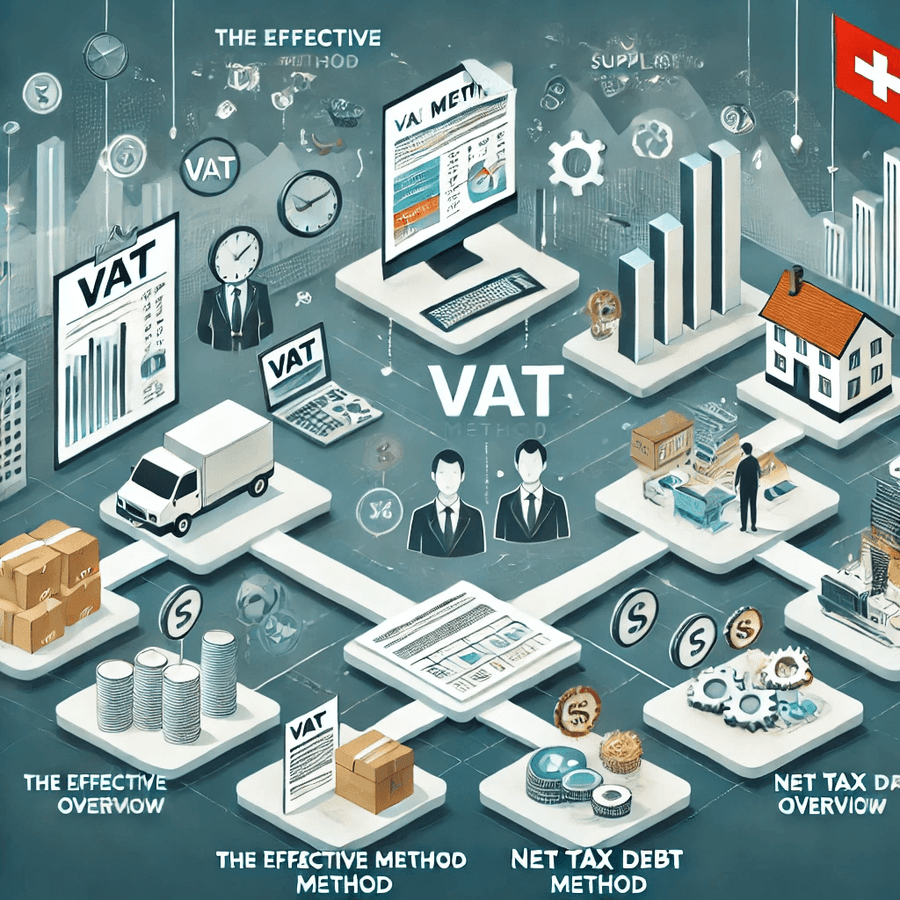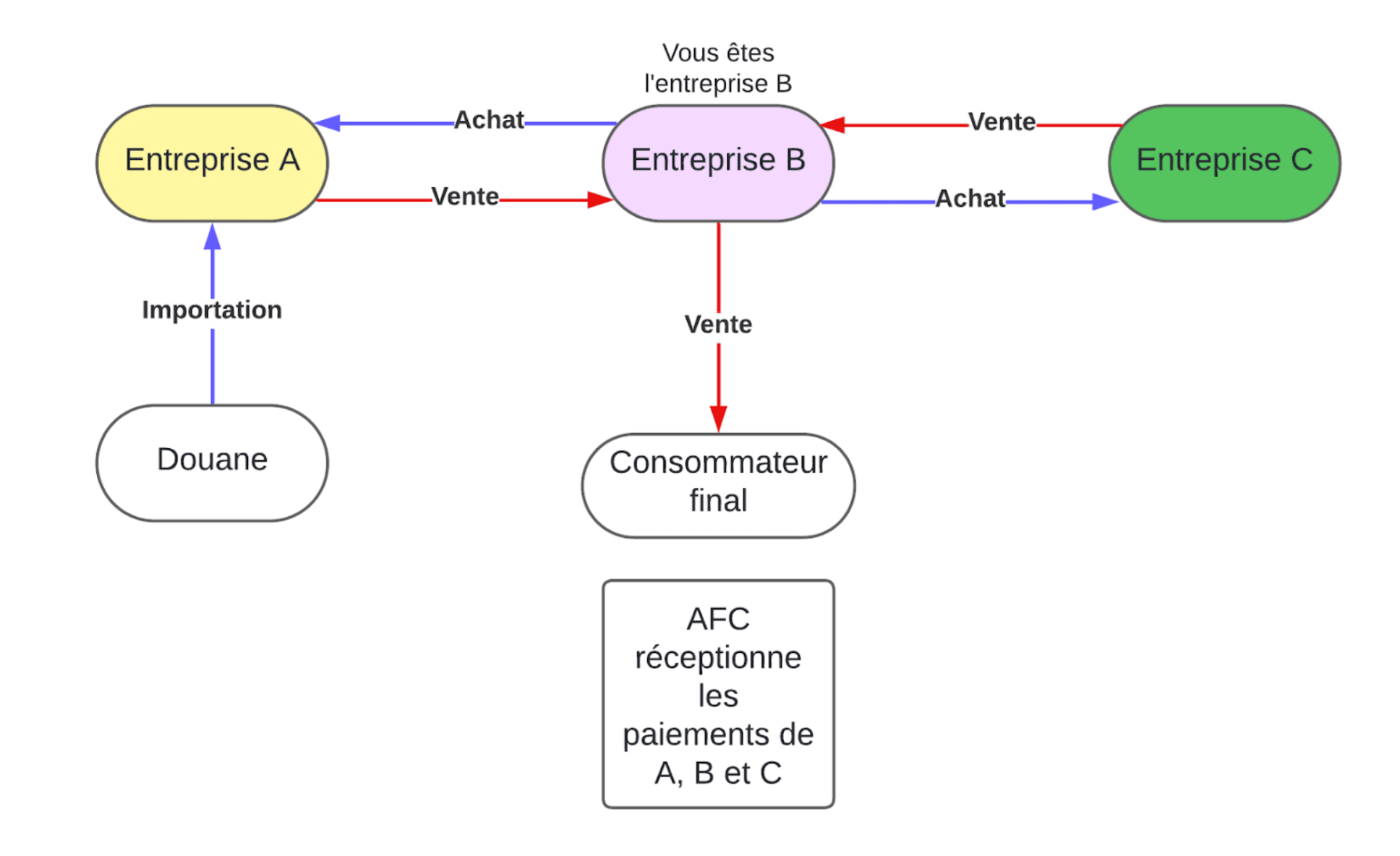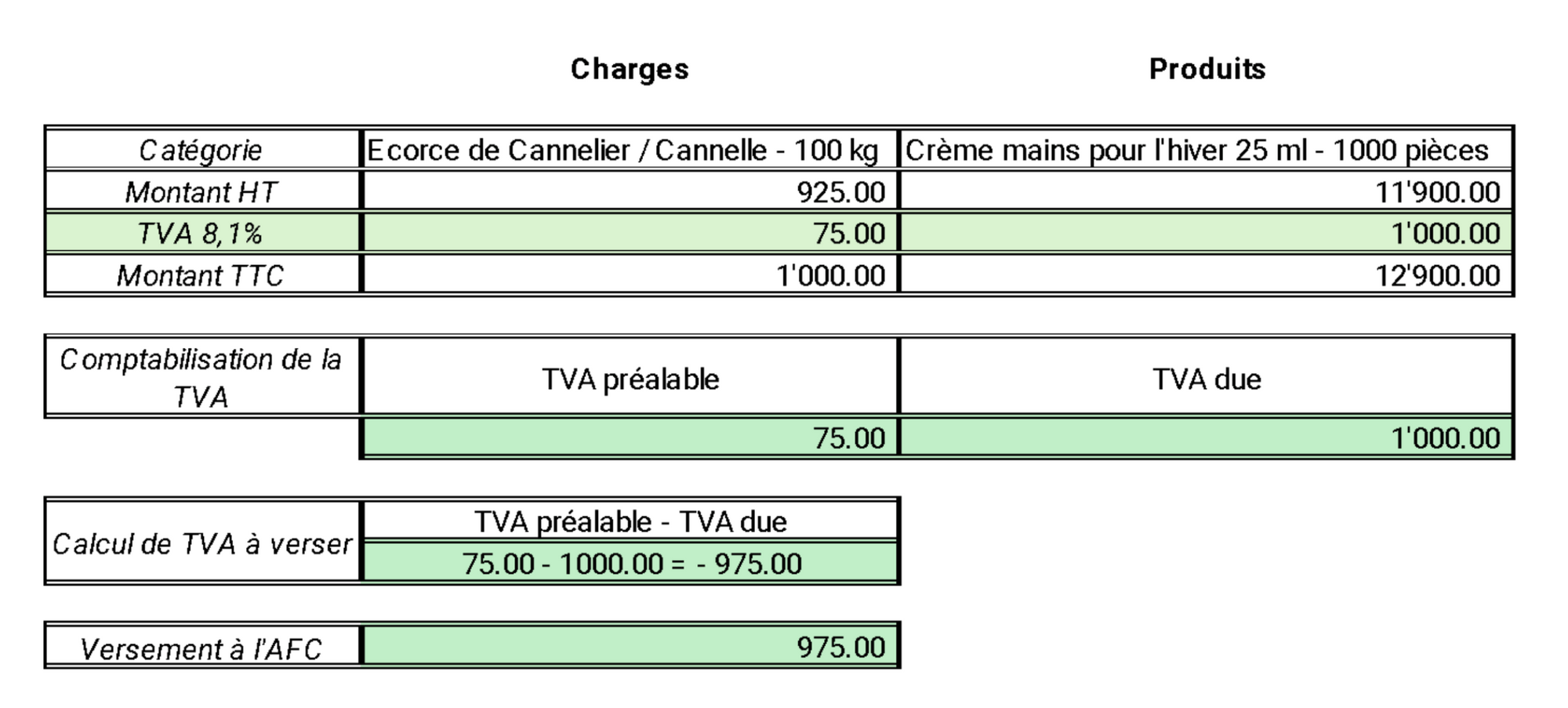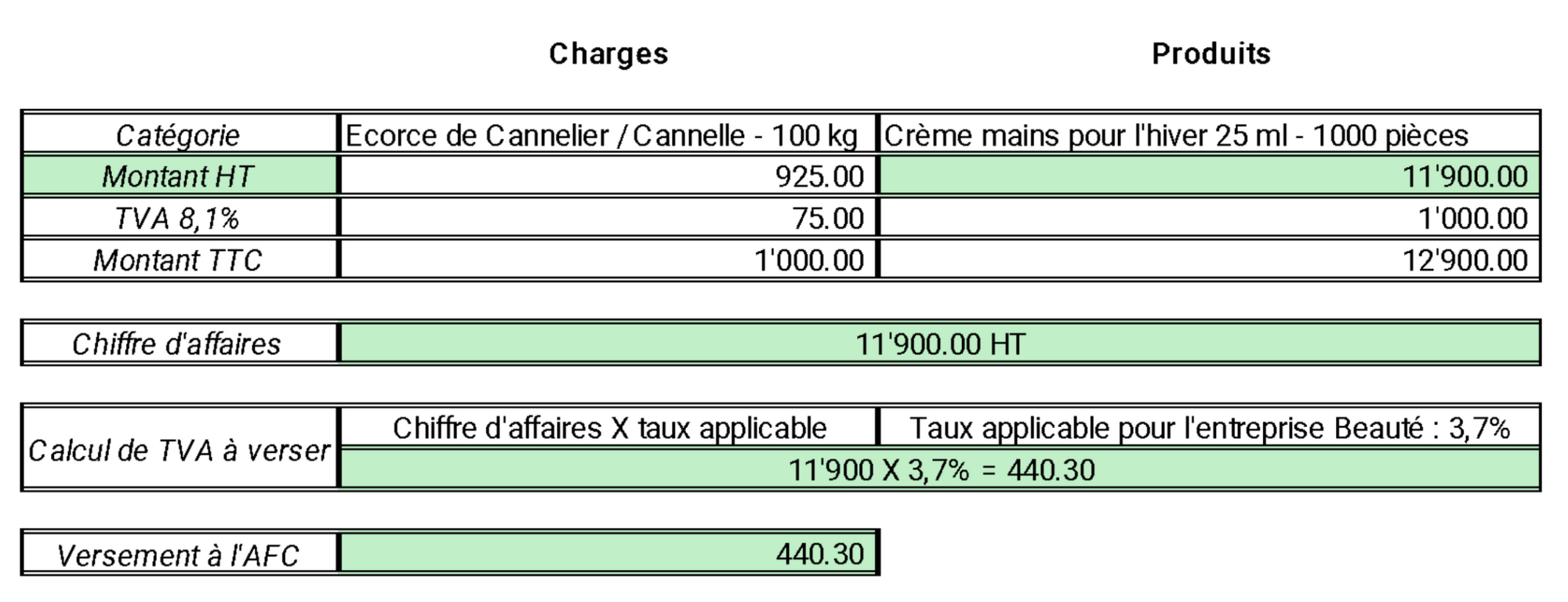Company A: In Switzerland, VAT on imports is collected by the Federal Customs Administration. When importing, company A pays VAT to customs. There are several possibilities. Generally, the carrier invoices it for VAT on the goods delivered and pays it to customs, which pays it to the tax administration (AFC).
Company B: It buys products from companies A and C and sells its manufactured products to the end consumer. It pays VAT to companies A and B and collects the tax from the end consumer.
Company C: It resells its products to company B on Swiss territory. VAT is collected on its sales.
End consumer: He pays the tax without being able to recover it.
Customs: notes the value of the transaction and applies VAT to the transaction.




